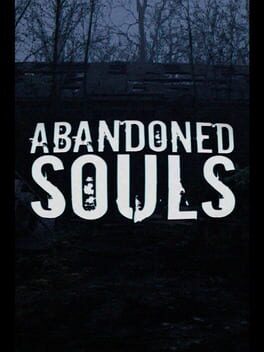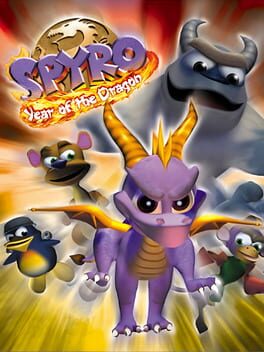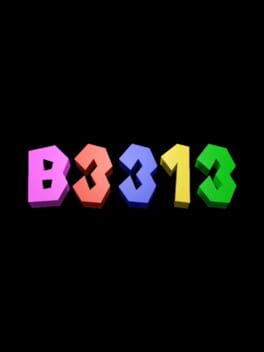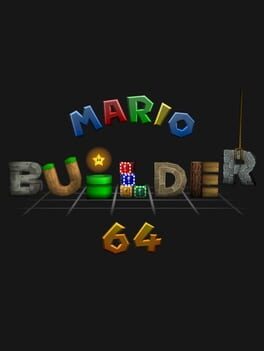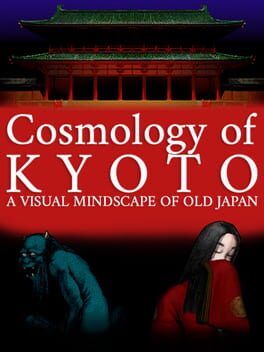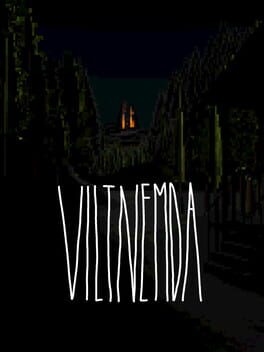ANerdList
118 Reviews liked by ANerdList
Abandoned Souls
2023
Tunic
2022
Tunic is an incredible experience that captures the essence of classic esoteric video games, with a pen and paper feel. It's rich in depth and atmopshere, it's puzzles are engaging, it's main collectible is incredible.
I love everything about this game. I can't really go in-depth without ruining the magic. This is just one of those games where I have to beg you to trust me. If you're comfortable with complex solutions and a world that doesn't guide you, this game is for you.
I love everything about this game. I can't really go in-depth without ruining the magic. This is just one of those games where I have to beg you to trust me. If you're comfortable with complex solutions and a world that doesn't guide you, this game is for you.
Fun game. Not as fun as 2 and nowhere near as fun as 1 but still lot of good levels with fun stuff to do.
Lot of the levels were not as good as the previous games' levels and there's too many levels where you play as someone besides Spyro.
Still a solid entry to finish the trilogy. I also liked how there was more of a story in this one.
Lot of the levels were not as good as the previous games' levels and there's too many levels where you play as someone besides Spyro.
Still a solid entry to finish the trilogy. I also liked how there was more of a story in this one.
Sonic 3D Blast
1996
Sonic 3D Blast
1996
yeah, i dunno, i think this one gets a lot of hate and... i don't really see it? i actually find sonic's looser control here to be pretty good. the roll feels pretty good to pull off here and i think the collision physics work considering sonic kinda pinballs around the environment. i think having to manually pick up and hold the flickies is probably the game's biggest issue and i feel like with that tweek alone this rating goes up a good bit. the music here is stellar and i'm especially a fan of the tracks that made it into adventure. pretty charming and i'm honestly kind of a fan of this isometric physics platformer idea! it's cool! :)
B3313
2021
genuinely HOW is this on backlogged
regardless of my confusion this is super impressive and provides so much to play, its a really fun thing for discord streams and stuff. Unrelated to the game itself but sadly the ongoing very publicly brought up drama amongst the development side of both the official and unabandoned version leaves a slightly bad taste in my mouth and its probably had some genuine effects on how i feel when playing the game. its still amazing though and better than basically every official mario game
regardless of my confusion this is super impressive and provides so much to play, its a really fun thing for discord streams and stuff. Unrelated to the game itself but sadly the ongoing very publicly brought up drama amongst the development side of both the official and unabandoned version leaves a slightly bad taste in my mouth and its probably had some genuine effects on how i feel when playing the game. its still amazing though and better than basically every official mario game
B3313
2021
Play Unabandoned.
A flawed masterpiece, riddled with less than subtle jabs at the drama surrounding it. "Shame! Shame! Shame!"
I had a 1-2k word review for this, but it is unfinished; therefore, this review will be Bojangles4th's B3313 Review 0.9 Abandoned.
Can already hear the clamors of "just separate the art from the artist!!" but that sign section reeked to me. I shrugged it off in ignorance and a desire to continue this experience blind. I did not follow the iceberg stuff, I did not read SM64 creepypastas (though I knew about the majority of the urban legends predating the mass-writing exercise fabrication process in 2020), and the BOO
<this page has crashed!>
<refresh page>
Unfortunate, as exploring this game is utterly magical to me but I can't in good faith ever recommend [REDACTED]
<this page has crashed!>
<refresh page>
I forgot what I was going to say. Might as well mark the review as finished (abandoned). This is you (the reader's) fault.
This is Bojangles4th's B3313 1.0 (Official) review, version 0.9 (Abandoned)
GET ME OUT!!
<this page has crashed!>
<do not refresh page>
Romhacking page for B3313 Unabandoned: https://romhacking.com/hack/b3313-unabandoned
BL page for it: https://www.backloggd.com/games/b3313-unabandoned/
A flawed masterpiece, riddled with less than subtle jabs at the drama surrounding it. "Shame! Shame! Shame!"
I had a 1-2k word review for this, but it is unfinished; therefore, this review will be Bojangles4th's B3313 Review 0.9 Abandoned.
Can already hear the clamors of "just separate the art from the artist!!" but that sign section reeked to me. I shrugged it off in ignorance and a desire to continue this experience blind. I did not follow the iceberg stuff, I did not read SM64 creepypastas (though I knew about the majority of the urban legends predating the mass-writing exercise fabrication process in 2020), and the BOO
<this page has crashed!>
<refresh page>
Unfortunate, as exploring this game is utterly magical to me but I can't in good faith ever recommend [REDACTED]
<this page has crashed!>
<refresh page>
I forgot what I was going to say. Might as well mark the review as finished (abandoned). This is you (the reader's) fault.
This is Bojangles4th's B3313 1.0 (Official) review, version 0.9 (Abandoned)
GET ME OUT!!
<this page has crashed!>
<do not refresh page>
Romhacking page for B3313 Unabandoned: https://romhacking.com/hack/b3313-unabandoned
BL page for it: https://www.backloggd.com/games/b3313-unabandoned/
B3313
2021
Spent basically my whole day on this and wow is it something special. Just exploring the castle over and over and finding all the different secrets and courses is satisfying and the game left me feeling so uneasy due to its dreamlike feel. Just genuinely a fun time all around, I can't say much more besides play it yourself! Well worth going into as blind as possible...
Mario Builder 64
2024
i spent 7 hours shittaly remaking bob-omb battle field for the bit please send help
oh heres the level btw lmao: https://levelsharesquare.com/levels/664c0645aa12cca0d9be203b
oh heres the level btw lmao: https://levelsharesquare.com/levels/664c0645aa12cca0d9be203b
Mario Builder 64
2024
Cosmology of Kyoto
1993
Easily one of the best videogames I've ever played, Cosmology of Kyoto is probably most well-known for being the one game Roger Ebert actually liked. I think that's a bit of a misnomer -- it was also the only game he actually played, as far as I am aware (in his own words, he also played Myst, but "lacked the patience" for it). Regardless I think it's a shame that this game's reputation seems to be entirely founded on that fact, which is so memetic that I doubt most people who reference it (three of the top six reviews for the game on this site do so) have actually read his review of the game, let alone his two articles on his view of videogames as a whole that endlessly prompt the sort of discussions in which Cosmology of Kyoto is most likely to be brought up. Not only did his appreciation for Cosmology of Kyoto have nothing to do with the aforementioned articles, written more than a decade later, but that reputation also detracts from the genuine discussion and recognition that this game deserves, recognition of it as something greater and more important than a niche cult classic or a forgotten, fascinating novelty.
Of course, that isn't to say Cosmology of Kyoto isn't fascinating. When you start the game you are greeted with an immediately compelling intro describing the background for the "psychic journey" you are about to undergo. The game's primary themes are established here through the information on the historical and supernatural nature of Kyoto, or Heian-kyō. Throughout the rest of the game, you will have constant access to a reference menu in the top left corner ready to provide you with seemingly endless information on historical figures and events, names of streets and districts, stories of ghosts and demons, local myths, and a plethora of concepts relating to Pure Land Buddhism. It reminded me a lot of Paranormasight, a visual novel that came out last year with a similar focus on niche supernatural and historical mysteries relating to a specific region of Japan, to the extent that I wouldn't be surprised if Cosmology of Kyoto was a major influence on that game. The game is up-front about its supernatural story, with the intro text telling you how "Special devices and skills are deployed to protect (Kyoto) on the cosmic plane." Almost every encounter and event in the game involves demons, ghosts, spirits, or monsters to some extent. Still, through the abundance of information in the reference menu Cosmology of Kyoto provides a more comprehensive educational experience than many games actually focused on accurately depicting history. Checking it after a strange event will tell you the basis for that story, down to the specific ancient text it appeared in. You can sort entries by category and you don't need to see something in the game before the reference menu includes it. In fact, you can boot the game as just the reference menu if you've finished playing and just want to read more (I've already done this a few times). On top of all of that, there's an extensive bibliography. There's a massive amount of text dedicated to real-world context and information, especially for a game this formally strange, but that combination of well-researched educational info with the esoteric, Yume Nikki/LSD: Dream Emulator-esque bizarre unguided gameplay is one of the most effective aspects of Cosmology of Kyoto's unique atmosphere.
I suppose I should elaborate a little more on the gameplay itself. Perhaps the most notable aspect is the way it resolves a major problem I had with Sekiro when I played it earlier this year. That game attempts to unite its story and gameplay around the tenets of Buddhism, with the cycle of death and rebirth used as justification for the act of respawning in game. I didn’t like the way Buddhism was used in the story and wished that Fromsoft had gone further in integrating it thematically into the gameplay. Cosmology of Kyoto goes a step (quite a few steps, really) further in that integration. When you die you are sent to one of the six realms of rebirth in Buddhist cosmology depending on your karma in life. I'm not sure how many options there are here, since I only died four or five times, but I entered at least three realms. The hell realm, in which you watch scenes of gruesome torture, the animal realm, where you reincarnate in the form of a dog, and the Asura realm, where you watch a little demigod get shot full of arrows by Devas (I think you might actually be the demigod in the Asura realm, accumulating karma before returning as a human, but it's unclear). However, all of these are just brief scenes to serve as temporary setbacks before you return. It's very easy to die from any given encounter, and the constant reinforcement of the cycle of Samsara through the visuals of the realms of rebirth is a very effective way to immerse the player in the game's Buddhist themes. Between that, the many encounters with priests and monks, the frequent repetition of the Nenbetsu, the pages upon pages of religious information in the reference menu, and the usage of a sutra as your primary weapon against demons, it’s probably the most thoroughly Buddhist game you’ll ever play.
The visuals may be the most impressive part of the game. There’s a grotesque over-exaggeration to almost all the characters you see early on, wizened old men and hunched-over beggars, and the few higher-class, noble characters you meet are typically dismissive of you. Women are torn apart by demons, men transform into monsters, children are beheaded, and yet there is a sense of beauty within all the gruesome violence conveyed through the influence from classic Japanese art. The outfits and expressions go a long way in making the constant gore and slaughter in Cosmology of Kyoto feel genuinely artistic, and the format of the visuals helps as well. The game is presented in a standard 4:3 format but most of the screen is taken up by menus. You’ve got a compass (in Kanji) and the reference and settings tabs on top, and massive black boxes where your items, money, and karma are occasionally displayed on the bottom. The environment and characters are displayed in a small strip in between, effectively forcing the game's visuals into a rudimentary widescreen display. You’d think this would detract from the game, but every screen feels deliberately composed in a way that feels reminiscent of Byobu folding screen art. One of the most striking compositions occurs early on when a large demon rises behind the Samurai at the Rajomon gate and he turns to face it, sword in hand. There are many moments like this, where the limited screen space actively enhances the visuals, and I wish more games would strive for this sort of consideration for shot composition instead of cluttering environments with meaningless detail. Much of the game is spent wandering around bland roads and passageways, but it works to reinforce the dismal tone of the game and makes the occasional unique location like temples, bridges, and forests stand out that much more. Most of the game's best visuals are found in the events. I don’t want to spoil too many of them, and I probably didn’t see all of them anyway, but I’ll list a few of my favorites. Your major roadblock in getting to the palace on the north side of the city is a foreign ambassador’s ghostly entourage, which covers the entire street. An ephemeral warrior holds out his hand as he warns you to take another road, and you can see the line of men behind him through his translucent form. When traveling east from the main gate, I witnessed a meteor fall from the sky and collide with the ground in front of me, leaving a massive glowing red orb embedded in the ground. Later, I was led to the outskirts of town following a palanquin as part of a funeral procession, where I found a corpse being picked apart by crows and a crumbling well that flashed a vision of hell on screen when I looked into it. These are a small amount of the events I saw across my playthrough and I have to imagine, just looking at the map of the game, that there are plenty more I didn’t find.
Cosmology of Kyoto’s story is interesting and I found the ending quite powerful, but it’s absolutely not the main point. I think you could beat the game if you knew what to do in around 30 minutes, maybe less. Like Yume Nikki, the appeal of the game does not come from seeing the ending, but rather the time you spend getting there. The conclusion is only made more effective the more time you have spent exploring the city. Of course, it’s a very vague and cryptic game so you won’t find the ending easily regardless, but I think the best way to play Cosmology of Kyoto is to avoid that goal entirely and explore it slowly, step by step. Boot it up for a bit, wander around the market, bet some coins at the cockfighting ring, help a Samurai slay a demon, explore a goblin-infested house, or practice Buddhist rituals in the temple. The game is at its best when you don’t know what’s coming next, and don’t have a specific plan in mind. It thrives on unpredictability and obfuscation in the same way that some of the best games ever made, like Yume Nikki and Pathologic, do. However, unlike even those titles Cosmology of Kyoto serves the dual purpose of also teaching you something. If you check the reference menu after each event you see, there’s no way you won’t walk away from the game knowing something about history, mythology, or religion that you didn’t before. It’s incredibly impressive that a game this well-researched, comprehensive, strange, and compelling even exists, let alone the fact that it got such a good English release back in the mid-90s. It’s a game that manages to balance a wealth of information with surreal gameplay, never letting the weight of one aspect compromise the other. It manages to interlay its themes clearly throughout the experience despite the fact that the narrative and gameplay are almost entirely unguided. It manages to deliver its religious themes without ever infringing on the mystique of the strange people, places, and events you encounter. It does all of these things, and more, far better than most other games I’ve ever played. Cosmology of Kyoto is a truly unique and impressive game, one deserving of far greater recognition than it has received. It’s free on myabandonware and simple to set up with the launcher in the comment section. If a single thing I have said in this review interested you even somewhat, I cannot offer a higher recommendation that you play this game.
Namu Amida Butsu
Some notes:
I hope my first paragraph doesn’t come off too disparaging to Roger Ebert, I think he was one of the greatest critics ever, regardless of medium. One of the rare few critics whose writing was so good you could still appreciate his reviews even when you didn’t agree with him. His review of Cosmology of Kyoto is great as well, and absolutely worth reading. It’s certainly better and more concise than anything I’ve written here, lol.
In addition to Ebert, Guillermo del Toro mentioned Cosmology of Kyoto as one of his favorite games, alongside Gadget: Invention, Travel, & Adventure, a game I really need to play at some point.
The studio that made Cosmology of Kyoto, Softedge, released one other game, called Tripitaka: The Pilgrimage of Tripitaka. It presumably dealt with Chinese supernatural history in the same way Cosmology does for Japan. I say presumably because the game was, up until very recently, lost media. It was only sold at a specific museum exhibition in 1999 and was completely lost until last year when a copy was sold through an online auction. You can read more about the discovery here, but while the buyer didn’t share the game online they did post a video featuring about an hour of gameplay here. Of course, I’d prefer if something this rare and important was available to everyone, but that’s an argument beyond the scope of this review and ultimately it’s incredible that the game was found at all. If you like Cosmology of Kyoto at all that video is worth watching, it’s very interesting to consider where Softedge would have taken Cosmology’s signature tone and design when developing it into a series.
Of course, that isn't to say Cosmology of Kyoto isn't fascinating. When you start the game you are greeted with an immediately compelling intro describing the background for the "psychic journey" you are about to undergo. The game's primary themes are established here through the information on the historical and supernatural nature of Kyoto, or Heian-kyō. Throughout the rest of the game, you will have constant access to a reference menu in the top left corner ready to provide you with seemingly endless information on historical figures and events, names of streets and districts, stories of ghosts and demons, local myths, and a plethora of concepts relating to Pure Land Buddhism. It reminded me a lot of Paranormasight, a visual novel that came out last year with a similar focus on niche supernatural and historical mysteries relating to a specific region of Japan, to the extent that I wouldn't be surprised if Cosmology of Kyoto was a major influence on that game. The game is up-front about its supernatural story, with the intro text telling you how "Special devices and skills are deployed to protect (Kyoto) on the cosmic plane." Almost every encounter and event in the game involves demons, ghosts, spirits, or monsters to some extent. Still, through the abundance of information in the reference menu Cosmology of Kyoto provides a more comprehensive educational experience than many games actually focused on accurately depicting history. Checking it after a strange event will tell you the basis for that story, down to the specific ancient text it appeared in. You can sort entries by category and you don't need to see something in the game before the reference menu includes it. In fact, you can boot the game as just the reference menu if you've finished playing and just want to read more (I've already done this a few times). On top of all of that, there's an extensive bibliography. There's a massive amount of text dedicated to real-world context and information, especially for a game this formally strange, but that combination of well-researched educational info with the esoteric, Yume Nikki/LSD: Dream Emulator-esque bizarre unguided gameplay is one of the most effective aspects of Cosmology of Kyoto's unique atmosphere.
I suppose I should elaborate a little more on the gameplay itself. Perhaps the most notable aspect is the way it resolves a major problem I had with Sekiro when I played it earlier this year. That game attempts to unite its story and gameplay around the tenets of Buddhism, with the cycle of death and rebirth used as justification for the act of respawning in game. I didn’t like the way Buddhism was used in the story and wished that Fromsoft had gone further in integrating it thematically into the gameplay. Cosmology of Kyoto goes a step (quite a few steps, really) further in that integration. When you die you are sent to one of the six realms of rebirth in Buddhist cosmology depending on your karma in life. I'm not sure how many options there are here, since I only died four or five times, but I entered at least three realms. The hell realm, in which you watch scenes of gruesome torture, the animal realm, where you reincarnate in the form of a dog, and the Asura realm, where you watch a little demigod get shot full of arrows by Devas (I think you might actually be the demigod in the Asura realm, accumulating karma before returning as a human, but it's unclear). However, all of these are just brief scenes to serve as temporary setbacks before you return. It's very easy to die from any given encounter, and the constant reinforcement of the cycle of Samsara through the visuals of the realms of rebirth is a very effective way to immerse the player in the game's Buddhist themes. Between that, the many encounters with priests and monks, the frequent repetition of the Nenbetsu, the pages upon pages of religious information in the reference menu, and the usage of a sutra as your primary weapon against demons, it’s probably the most thoroughly Buddhist game you’ll ever play.
The visuals may be the most impressive part of the game. There’s a grotesque over-exaggeration to almost all the characters you see early on, wizened old men and hunched-over beggars, and the few higher-class, noble characters you meet are typically dismissive of you. Women are torn apart by demons, men transform into monsters, children are beheaded, and yet there is a sense of beauty within all the gruesome violence conveyed through the influence from classic Japanese art. The outfits and expressions go a long way in making the constant gore and slaughter in Cosmology of Kyoto feel genuinely artistic, and the format of the visuals helps as well. The game is presented in a standard 4:3 format but most of the screen is taken up by menus. You’ve got a compass (in Kanji) and the reference and settings tabs on top, and massive black boxes where your items, money, and karma are occasionally displayed on the bottom. The environment and characters are displayed in a small strip in between, effectively forcing the game's visuals into a rudimentary widescreen display. You’d think this would detract from the game, but every screen feels deliberately composed in a way that feels reminiscent of Byobu folding screen art. One of the most striking compositions occurs early on when a large demon rises behind the Samurai at the Rajomon gate and he turns to face it, sword in hand. There are many moments like this, where the limited screen space actively enhances the visuals, and I wish more games would strive for this sort of consideration for shot composition instead of cluttering environments with meaningless detail. Much of the game is spent wandering around bland roads and passageways, but it works to reinforce the dismal tone of the game and makes the occasional unique location like temples, bridges, and forests stand out that much more. Most of the game's best visuals are found in the events. I don’t want to spoil too many of them, and I probably didn’t see all of them anyway, but I’ll list a few of my favorites. Your major roadblock in getting to the palace on the north side of the city is a foreign ambassador’s ghostly entourage, which covers the entire street. An ephemeral warrior holds out his hand as he warns you to take another road, and you can see the line of men behind him through his translucent form. When traveling east from the main gate, I witnessed a meteor fall from the sky and collide with the ground in front of me, leaving a massive glowing red orb embedded in the ground. Later, I was led to the outskirts of town following a palanquin as part of a funeral procession, where I found a corpse being picked apart by crows and a crumbling well that flashed a vision of hell on screen when I looked into it. These are a small amount of the events I saw across my playthrough and I have to imagine, just looking at the map of the game, that there are plenty more I didn’t find.
Cosmology of Kyoto’s story is interesting and I found the ending quite powerful, but it’s absolutely not the main point. I think you could beat the game if you knew what to do in around 30 minutes, maybe less. Like Yume Nikki, the appeal of the game does not come from seeing the ending, but rather the time you spend getting there. The conclusion is only made more effective the more time you have spent exploring the city. Of course, it’s a very vague and cryptic game so you won’t find the ending easily regardless, but I think the best way to play Cosmology of Kyoto is to avoid that goal entirely and explore it slowly, step by step. Boot it up for a bit, wander around the market, bet some coins at the cockfighting ring, help a Samurai slay a demon, explore a goblin-infested house, or practice Buddhist rituals in the temple. The game is at its best when you don’t know what’s coming next, and don’t have a specific plan in mind. It thrives on unpredictability and obfuscation in the same way that some of the best games ever made, like Yume Nikki and Pathologic, do. However, unlike even those titles Cosmology of Kyoto serves the dual purpose of also teaching you something. If you check the reference menu after each event you see, there’s no way you won’t walk away from the game knowing something about history, mythology, or religion that you didn’t before. It’s incredibly impressive that a game this well-researched, comprehensive, strange, and compelling even exists, let alone the fact that it got such a good English release back in the mid-90s. It’s a game that manages to balance a wealth of information with surreal gameplay, never letting the weight of one aspect compromise the other. It manages to interlay its themes clearly throughout the experience despite the fact that the narrative and gameplay are almost entirely unguided. It manages to deliver its religious themes without ever infringing on the mystique of the strange people, places, and events you encounter. It does all of these things, and more, far better than most other games I’ve ever played. Cosmology of Kyoto is a truly unique and impressive game, one deserving of far greater recognition than it has received. It’s free on myabandonware and simple to set up with the launcher in the comment section. If a single thing I have said in this review interested you even somewhat, I cannot offer a higher recommendation that you play this game.
Namu Amida Butsu
Some notes:
I hope my first paragraph doesn’t come off too disparaging to Roger Ebert, I think he was one of the greatest critics ever, regardless of medium. One of the rare few critics whose writing was so good you could still appreciate his reviews even when you didn’t agree with him. His review of Cosmology of Kyoto is great as well, and absolutely worth reading. It’s certainly better and more concise than anything I’ve written here, lol.
In addition to Ebert, Guillermo del Toro mentioned Cosmology of Kyoto as one of his favorite games, alongside Gadget: Invention, Travel, & Adventure, a game I really need to play at some point.
The studio that made Cosmology of Kyoto, Softedge, released one other game, called Tripitaka: The Pilgrimage of Tripitaka. It presumably dealt with Chinese supernatural history in the same way Cosmology does for Japan. I say presumably because the game was, up until very recently, lost media. It was only sold at a specific museum exhibition in 1999 and was completely lost until last year when a copy was sold through an online auction. You can read more about the discovery here, but while the buyer didn’t share the game online they did post a video featuring about an hour of gameplay here. Of course, I’d prefer if something this rare and important was available to everyone, but that’s an argument beyond the scope of this review and ultimately it’s incredible that the game was found at all. If you like Cosmology of Kyoto at all that video is worth watching, it’s very interesting to consider where Softedge would have taken Cosmology’s signature tone and design when developing it into a series.
Indika
2024
This review contains spoilers
type of game that fucks my whole life up forever. i can put aside any complaints i had while playing cause i was totally captivated for pretty much the entire time. funny and surreal and sad all at once. perfect for playin in one sitting too!!
religion is maybe not the best thing we have been cookin up us as humans :/
religion is maybe not the best thing we have been cookin up us as humans :/
